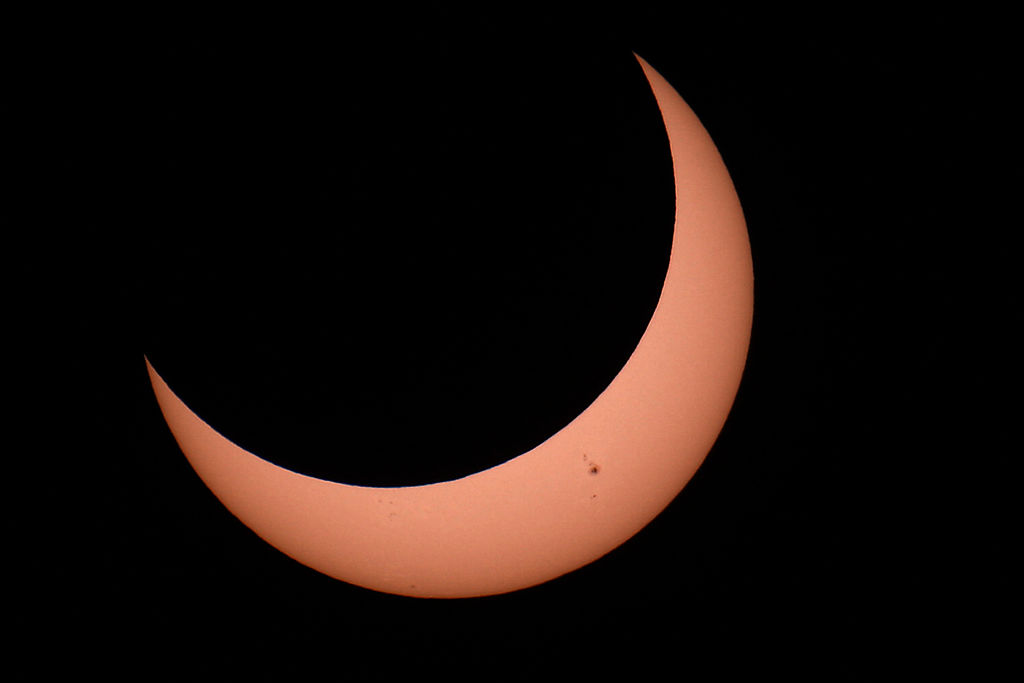Throughout the month of June 2021, several events can be observed in space such as the annual solar eclipse characterized by its impressive “ring of fire”, followed by the summer solstice, the longest day of the year, the arrival of the full moon of strawberry and three spacewalks outside the International Space Station.
Here we tell you which are the most impressive events of this month and when they will occur.
“Ring of Fire” Solar Eclipse
This year, the annual solar eclipse will occur on June 10 and can be seen in northern Canada, Greenland and Russia, and can be partially observed in cities such as New York, Montreal, London and Washington. This type of eclipse is characterized by its impressive “ring of fire” as it is not a total eclipse and the edges of the Sun can be seen around the Moon.
“Annular eclipses are similar to total eclipses in which the Moon, Earth, and Sun are aligned so that the Moon moves directly in front of the Sun as seen from Earth,” said Alex Young, Associate Director of Science at the Division of Heliophysics Sciences at NASA’s Goddard Space Flight Center.
But a total eclipse does not occur, that is, the Moon does not completely block the visible disk of the Sun because the Moon is further away and its apparent size in the sky is smaller than the Sun. This means that a small annular ring of the solar disk is visible around the Moon.
According to Young, solar eclipses occur two weeks before or after a lunar eclipse. On May 26 the flower supermoon adorned the sky and on June 24 the strawberry moon will be seen.
Summer Solstice
The longest day of the year usually starts the summer and, with it, the harvest. So it should come as no surprise that the solstice is linked to fertility, both of the plant and human variety, in various destinations around the world.
The summer solstice will arrive on June 20 at 11:16 pm (Miami time), kicking off summer in the northern hemisphere and winter in the southern hemisphere.
Strawberry full moon
After seeing the incredible May Flower Supermoon, on June 24 we will be able to see the Strawberry Full Moon which will be at its brightest at 2:40 pm (Miami time), but it won’t be visible until later. on day. You can check out this calculator to find out when is the best time to see the strawberry full moon in your location.
The strawberry moon is named after the Algonquin tribes of Native Americans, as this full moon was their sign for harvesting wild strawberries, according to The Old Farmer’s Almanac. However, this moon has other names in other parts of the world. In Europe, it is called a honeymoon, mead moon, or full rose moon. In the southern hemisphere, it is known as an oak moon, cold moon, or long night moon, according to EarthSky.org.
Spacewalks
Three spacewalks will take place outside the International Space Station (ISS) in June, starting on June 2, the day that Russian astronauts Oleg Novitskiy and Pyotr Dubrov will walk for 6.5 hours outside the ISS. The walk will begin at 1:20 am Miami time.
On June 16, the second spacewalk of the month will be held by NASA astronaut Shane Kimbrough and European Space Agency astronaut Thomas Pesquet. The walk will last 6.5 hours and will take place outside the International Space Station in order to install a new solar panel. The walk will begin at 8:00 am Miami time.
Four days later, on June 20, Kimbrough and Pesquet will conduct a second 6.5-hour spacewalk to install another solar panel outside the International Space Station. The walk will start at 8:00 am.
Launches into space
SpaceX will launch on June 3 at 1:29 pm Miami time. the reusable SpaceX Dragon 2 spacecraft from Kennedy Space Center to the International Space Station. The cargo spacecraft will deliver “more than 3,311 kilograms of science, research, crew supplies and vehicle hardware, including new solar panels, to the orbiting laboratory and its crew,” according to a NASA press release.
The launch will be broadcast on June 3 at 1:00 pm Miami time by NASA and can be seen on NASA Television, on the agency app and in his website.
On June 27, the spacecraft named after the famous NASA mathematician Katherine Johnson that arrived at the International Space Station in February with approximately 3,600 kilograms of cargo will leave the space laboratory and begin its descent to Earth. The astronauts will release the spacecraft at 10:50 a.m. Miami time.

